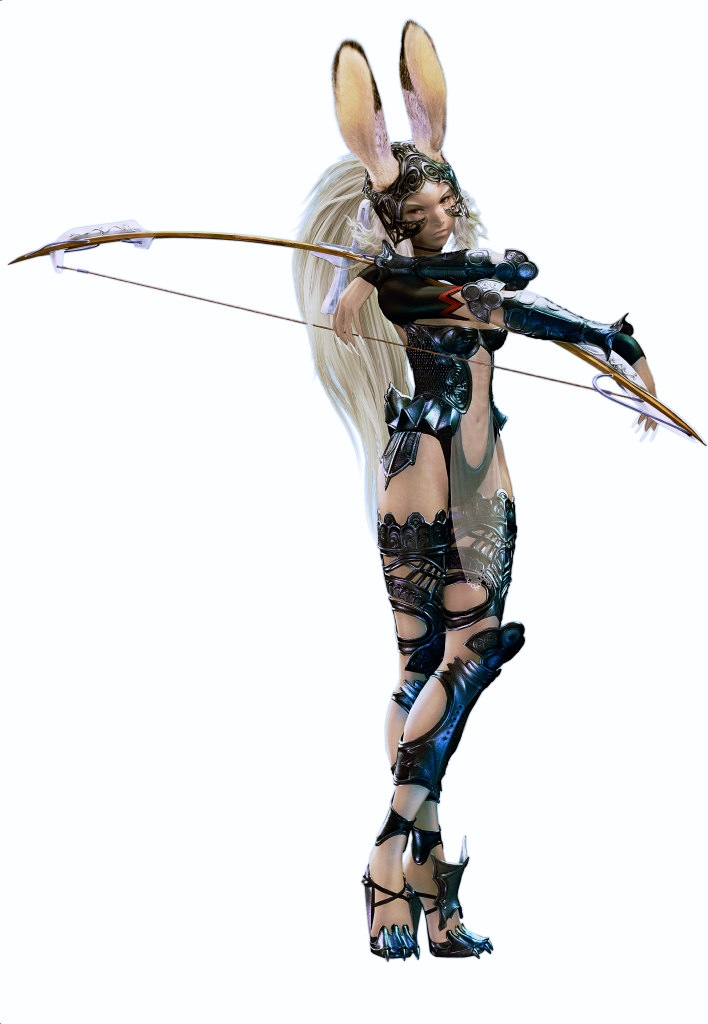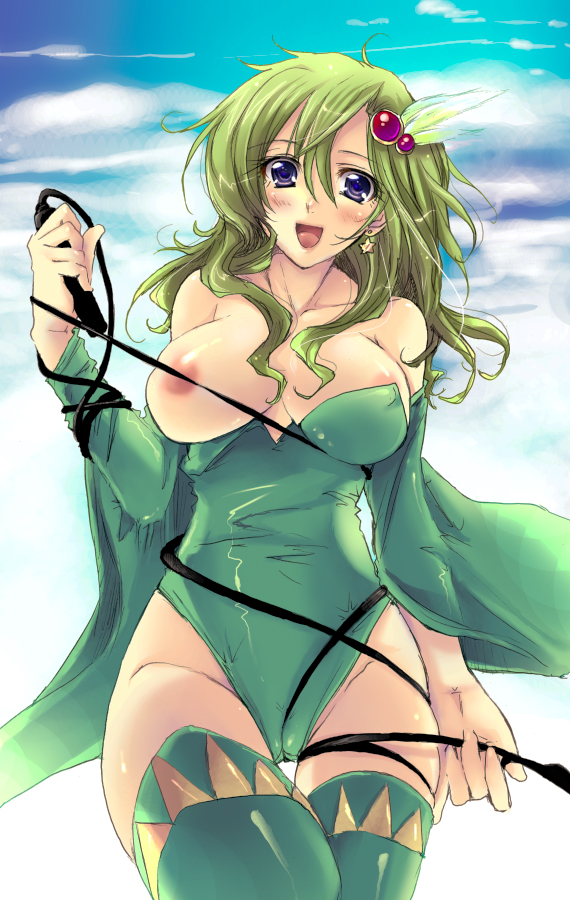
For most of my life, I never gave any serious thought to the Final Fantasy series, despite the literally hundreds of hours I’ve spent playing it. I always had two fundamental assumptions regarding the series’s female characters. First of all, they can fight just as well as the male characters. Second, while they are very, very pretty, so too are the male characters. Like it says on the box, this is fantasy. In other words, my allergy to misogyny never flared up while I was playing the games.
I have since reconsidered these two assumptions. Before I begin this essay in earnest, however, I would like to state that I do not consider the Final Fantasy series to be misogynistic. Still, there are nuances in the portrayal of the primary female characters of the series that I would like to address.
I’d like to start off by defining my terms. Feminism, pure and simple, is the idea that men and women should be given equal opportunity. Although there are some basic biological differences between men and women that transcend time and culture, feminists believe that neither men, nor women, nor anyone in between should be judged or discriminated against simply by virtue of their sex or gender.
The antitheses of feminism are misogyny and sexism. Misogyny is an attitude of hatred towards women. It’s expressed through statements such as “Women are weaker than men” or “women can’t do [x, y, or z] as well as men.” It can also be expressed by identifying negative qualities with femininity, such as referring to a coward as a pussy. Misogyny is a type of sexism, which is an overgeneralization of character traits based on sex or gender. Sexism is like racism or ethnocentrism; it’s like saying “Jewish people are good with money” or “French people wear fashionable clothing.” Common sexist misconceptions include the ideas that women are more spiritual than men, that women are more artistic than men, that women are more in touch with their emotions than men, and that women have stronger social networks than men.
While on the surface it may seem like none of these statements is negative, such overgeneralizations in fact trap women within narrowly-defined social expectations. For example, a female elementary school student with a talent for math might not be encouraged and rewarded in the same way that a male student would be, since obviously girls are not good with numbers. Let’s say this little girls fights social pressure and the indifference of her teachers and grows up to become a promising investment banker. It’s really too bad that she won’t receive the same starting salary as her male colleagues, since everyone knows that she’ll just get pregnant, get married, and quit the firm. When facing social pressure and statistics like this, it can be difficult for girls and women to achieve personal goals that fall outside gender-related stereotypes.
One of the main tenets of feminism is that both boys and girls are constantly subjected to sexist social messages. If, for example, there were just one instance of a naïve young girl who makes stupid decisions for love being valorized while an experienced, unmarried older woman with political ambitions is demonized, then we could leave it at that – it’s just one instance, and relatively harmless. Feminist thought holds that there is an interconnected, unending web of such messages, however.

Both boys and girls are constantly bombarded with sexist social messages, and it’s difficult to escape their influence, even with proper parenting and media awareness. Over the past several decades, there has been a great deal of debate concerning what should be done about this. I personally believe that most people are smart enough to see through and see past sexism, but it’s still good for women to have strong female role models who aren’t villainized.
This brings us to Final Fantasy. Does the series promote sexist views of women? Does it provide strong female role models for the players who invest so much time and emotional energy into the series? To address these questions, I am going to look at three characters: Rydia from Final Fantasy IV, Aeris from Final Fantasy VII, and Fran from Final Fantasy XII. I will use these characters as examples in order to argue for a shift in the series from a male-centered viewpoint to a more gender-neutral narrative focus.

Before analyzing these three specific characters, though, I think it might be worthwhile to introduce the video games themselves. Final Fantasy is a series of fantasy role-playing games published by Square-Enix, which was formerly known as Square. Square was founded as a developer of computer game software by Miyamoto Masafumi in 1983 and, within five years, had fallen on tough times. In 1987, the company’s director of planning and development, Sakaguchi Hironobu, came up with the concept of a simplification of computer-based role-playing games meant to capitalize on the success of Enix’s Dragon Quest, which had been released the previous year. Because the success or failure of Sakaguchi’s proposed game would make or break the company, the seven-man production team decided to call the project “Final Fantasy,” as it would be Square’s last game if it didn’t sell. The game did sell, however, and it has since expanded into a record-breakingly profitable franchise that has spawned countless spin-off games as well as numerous anime, manga, and feature films.
Besides Sakaguchi, several other key players in the early success of this franchise are Amano Yoshitaka, who was responsible for the games’ concept art, Uematsu Nobuo, who wrote the musical scores for the games, and Itō Hiroyuki, who designed the games’ distinctive battle systems. Since Final Fantasy VII, the series’s debut on the 32-bit Playstation console, Kitase Yoshinori has taken over directorship of the games, and Nomura Tetsuya, who had previously adapted Amano’s artwork into pixel-based sprites, took over art direction and character design. The staff for each successive game in the series has gotten larger as each game has become more sophisticated in terms of technology and gameplay, so it’s impossible to attribute the success any of the games to the genius of one or two people. I mention these names of directors, programmers, artists, and composers in order to emphasize the careful planning and artistic contributions that go into every game in the series.
I also mention these names to point out that the main contributors to the series are male. Moreover, the primary audience of the games has historically been male. I should also point out that, with the exception of Final Fantasy X-2 and Final Fantasy XIII (and perhaps Final Fantasy VI, which is a bit of an anomaly in several ways), the player-character and primary hero of each of these games has been male. In other words, we’re talking about a group of men telling stories about men for an audience of men. Although by now it has become an untrue and clichéd stereotype that only men play video games, in the early days of the series, the stereotype was very close to the truth. Perhaps it’s therefore understandable that the games have been fairly phallocentric, a word that I use to refer to the dominance of a heterosexual, male-centered economy of desire. If the phrase “heterosexual, male-centered economy of desire” makes your head spin, I will confess that it makes my head spin a little too. In essence, though, it means that men are sexual subjects, and women are sexual objects. The boy gets the girl, not the other way around.
What I am going to argue is that the Final Fantasy games have become progressively less phallocentric with each successive installment in the series. This is a happy story, both for feminism as a whole and for fans of Final Fantasy, who come to the series looking for fully developed characters and intriguing stories, not just two-dimensional paper cut-outs going through the motions of a fantasy-themed farce. Before we can get to the more gender-equal present, however, we need to take off our nostalgia glasses and take a serious look at the dark days of the beginning of the series.

Part Two
Part Three
Part Four
Part Five




























